GREENLAND
Plants and Animals

Plants and Animals
Cities in GREENLAND
| Nuuk |
Plants and Animals
Plants
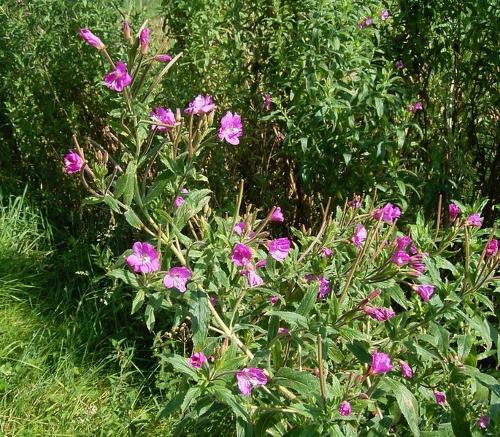 Willowherb, GreenlandPhoto: Frank Vincentz CC 3.0 no changes made
Willowherb, GreenlandPhoto: Frank Vincentz CC 3.0 no changes made
Despite the often harsh climate, Greenland is home to around 500 plant species, including even four types of orchids. The national flower is the willowherb. A typical Greenlandic is the rhubarb-like and tasty mountain angelica. Fields and meadows in the summer are dotted with heather, verbena, cottongrass, buttercup, chamomile, dandelion, bluebell, gentian, stonecrop and Arctic poppy.
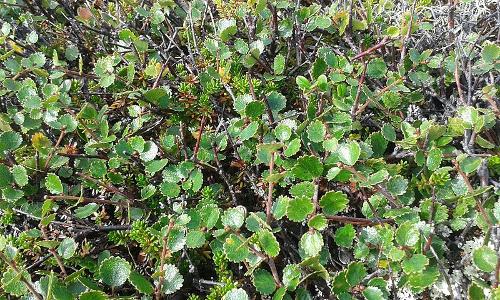 Dwarf Birch, GreenlandPhoto: Fioeledman CC 4.0 no changes made
Dwarf Birch, GreenlandPhoto: Fioeledman CC 4.0 no changes made
Greenland's climate is the reason why there are hardly any trees in Greenland. In the shelter of the fjords, there are a few birches here and there. Very common is the very small (10-20 cm) creeping dwarf birch. Blueberries, foxberries and lingonberries are edible. Edible mushrooms such as ceps and morels are plentiful.
Animals
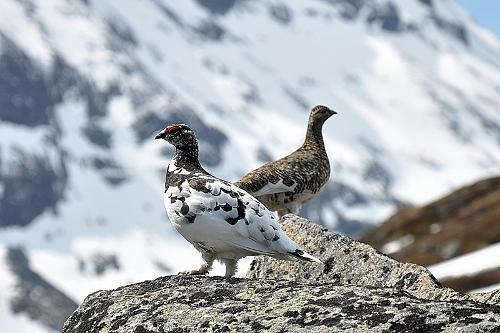 Rock Ptarmigan, GreenlandPhoto: Jan Frode Haugseth CC 3.0 no changes made
Rock Ptarmigan, GreenlandPhoto: Jan Frode Haugseth CC 3.0 no changes made
Greenland has a rich animal life, including more than 200 species of birds. The rock ptarmigan is the only bird in the world that develops white plumage in winter. Approximately 52 species of birds breed in Greenland, including cormorants, eider ducks, buntings, kittiwakes and swans. There are also four species of birds of prey: the snowy owl, the white-tailed eagle, the peregrine falcon and the vulture falcon.
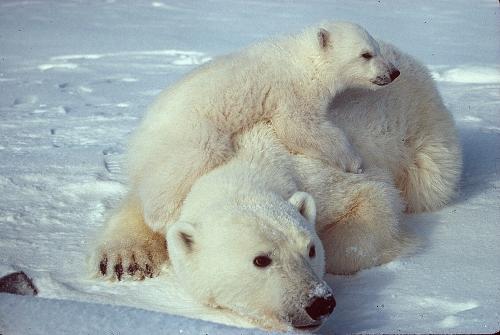 Polar Bear, GreenlandPhoto: Schliebe, Scott in the public domain
Polar Bear, GreenlandPhoto: Schliebe, Scott in the public domain
The polar bear is Greenland's best-known animal and is also featured on the country's coat of arms. The polar bear lives north of the Arctic Circle. There are more than 1500 of them in the national park. The arctic fox and the arctic hare grow white fur in winter. The arctic fox lives mainly on the northern tundra, but can be found all over Greenland. Moose are small rodents that die in large numbers during their migrations and live under the snow in winter.
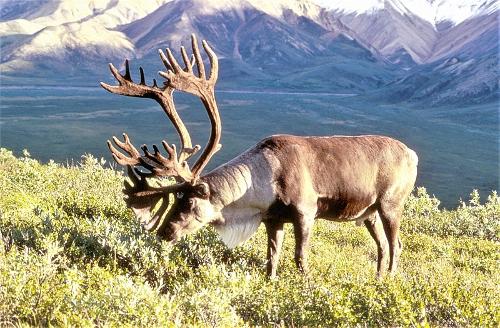 Reindeer, GreenlandPhoto: Dean Biggins in the public domain
Reindeer, GreenlandPhoto: Dean Biggins in the public domain
Reindeer occur in the wild but are also bred on farms. Several species of seals live in Greenland's coastal waters, including the common skunk seal (2 million individuals), the harp seal and the hooded seal. Walruses are also regularly spotted. The impressive musk ox, from the goat family, lives on the eastern tundra and in the west of Greenland. At present, there are about 2,000 of them in Greenland.
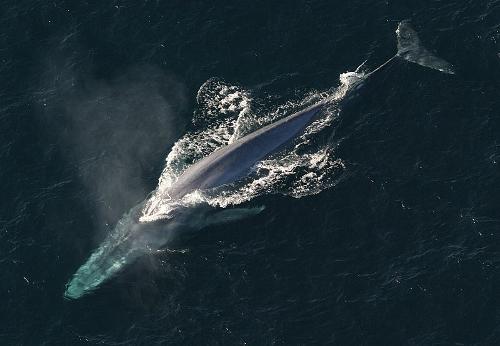 Blue Whale, GreenlandPhoto: NOAA Photo Library in the public domain
Blue Whale, GreenlandPhoto: NOAA Photo Library in the public domain
Approximately 20 species of whales inhabit Greenland's coastal waters, including the world's largest animal, the blue whale (up to 30 metres long). Just like the blue whale, the bowhead whale is threatened with extinction. The narwhal, with its two-metre-long tusk, is a special case. Fin whales, pilot whales, belugas, humpback whales, sperm whales and bottlenose dolphins are also often seen. The northern tundra and a large part of the land ice in the northeast was declared a National Park by Denmark in 1974. It is the largest protected area on earth and measures approx. 972,000 km2.
Sources
Stadler, H. / Groenland
ECI
Swaney, D. / Iceland, Greenland & Faroe Islands
Lonely Planet
CIA - World Factbook
BBC - Country Profiles
Copyright: Team The World of Info